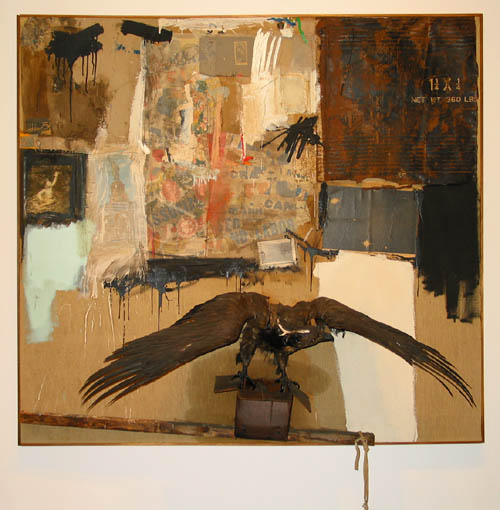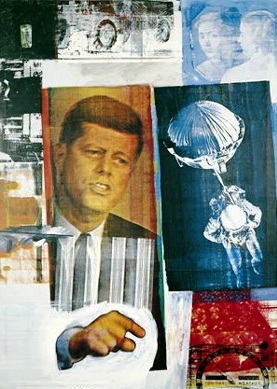Discover Florida Nature
It's time to explore the natural Florida


|
|
|
|
|
 One
of the truly influential artists of the 20th century, the works of
Robert Rauschenberg are included in the collections of major museums
throughout the world. Rauschenberg was a primary figure during the
important 1950's and 1960's era in New York, which strongly shaped the
direction of modern art. He has both founded and funded organizations to
help artists, such as the Rauschenberg Overseas Cultural Interchange
(ROCI), founded in 1983. Rauschenberg lived and worked in New York City
and on Captiva Island, Florida until his
death, May 12, 2008, from heart failure. One
of the truly influential artists of the 20th century, the works of
Robert Rauschenberg are included in the collections of major museums
throughout the world. Rauschenberg was a primary figure during the
important 1950's and 1960's era in New York, which strongly shaped the
direction of modern art. He has both founded and funded organizations to
help artists, such as the Rauschenberg Overseas Cultural Interchange
(ROCI), founded in 1983. Rauschenberg lived and worked in New York City
and on Captiva Island, Florida until his
death, May 12, 2008, from heart failure.Robert Rauschenberg, born Milton Ernst Rauschenberg, was an American artist who came to prominence in the 1950s transition from Abstract Expressionism to Pop Art. Rauschenberg is perhaps most famous for his "Combines" of the 1950s, in which non-traditional materials and objects were employed in innovative combinations. While the Combines are both painting and sculpture, Rauschenberg also worked with photography, printmaking, papermaking, and performance art. Born in Port Arthur, Texas in 1925, Robert Rauschenberg imagined himself first as a minister and later as a pharmacist. It wasn’t until 1947, while in the U.S. Marines that he discovered his aptitude for drawing and his interest in the artistic representation of everyday objects and people. After leaving the Marines he studied art in Paris on the G.I. Bill, but quickly became disenchanted with the European art scene. After less than a year he moved to North Carolina, where the country’s most visionary artists and thinkers, such as Joseph Albers and Buckminster Fuller, were teaching at Black Mountain College. Rauschenberg found his signature mode of painting by embracing materials traditionally outside of the artist’s reach. He would cover a canvas with house paint, or ink the wheel of a car and run it over paper to create a drawing, while demonstrating rigor and concern for formal painting.  In
1953 Robert Rauschenberg exhibited "Erased De Kooning Drawing", a
drawing by
Willem De
Kooning which Rauschenberg erased. It raised many questions about
the fundamental nature of art, challenging the viewer to consider
whether erasing another artist's work could be a creative act, as well
as whether the work was only "art" because the famous Rauschenberg had
done it. In
1953 Robert Rauschenberg exhibited "Erased De Kooning Drawing", a
drawing by
Willem De
Kooning which Rauschenberg erased. It raised many questions about
the fundamental nature of art, challenging the viewer to consider
whether erasing another artist's work could be a creative act, as well
as whether the work was only "art" because the famous Rauschenberg had
done it.Rauschenberg's approach was sometimes called "Neo-Dada," a label he shared with the painter Jasper Johns. Rauschenberg's oft-repeated quote that he wanted to work "in the gap between art and life" suggested a questioning of the distinction between art objects and everyday objects, reminiscent of the issues raised by the notorious "Fountain," by Dada pioneer, Marcel Duchamp. At the same time, Johns' paintings of numerals, flags, and the like, were reprising Duchamp's message of the role of the observer in creating art's meaning. Alternatively, in 1961, Rauschenberg took a step in what could be considered the opposite direction by championing the role of creator in creating art's meaning. Rauschenberg was invited to participate in an exhibition at the Galerie Iris Clert, where artists were to create and display a portrait of the owner, Iris Clert. Rauschenberg's submission consisted of a telegram sent to the gallery declaring "This is a portrait of Iris Clert if I say so." By 1962, Rauschenberg's paintings were beginning to incorporate not only found objects but found images as well - photographs transferred to the canvas by means of the silkscreen process. Previously used only in commercial applications, silkscreen allowed Rauschenberg to address the multiple reproducibility of images, and the consequent flattening of experience that implies. In this respect, his work is contemporaneous with that of Andy Warhol, and both Rauschenberg and Johns are frequently cited as important forerunners of American Pop Art. |
|
|
Robert Rauschenberg
Florida Artist
Florida Artist
Robert Rauschenberg, born Milton Ernst Rauschenberg, was an American artist who came to prominence in the 1950s transition from Abstract Expressionism to Pop Art. Rauschenberg is perhaps most famous for his "Combines" of the 1950s, in which non-traditional materials and objects were employed in innovative combinations. While the Combines are both painting and sculpture, Rauschenberg also worked with photography, printmaking, papermaking, and performance art.
DOB: undefined/undefined/1925
|
|